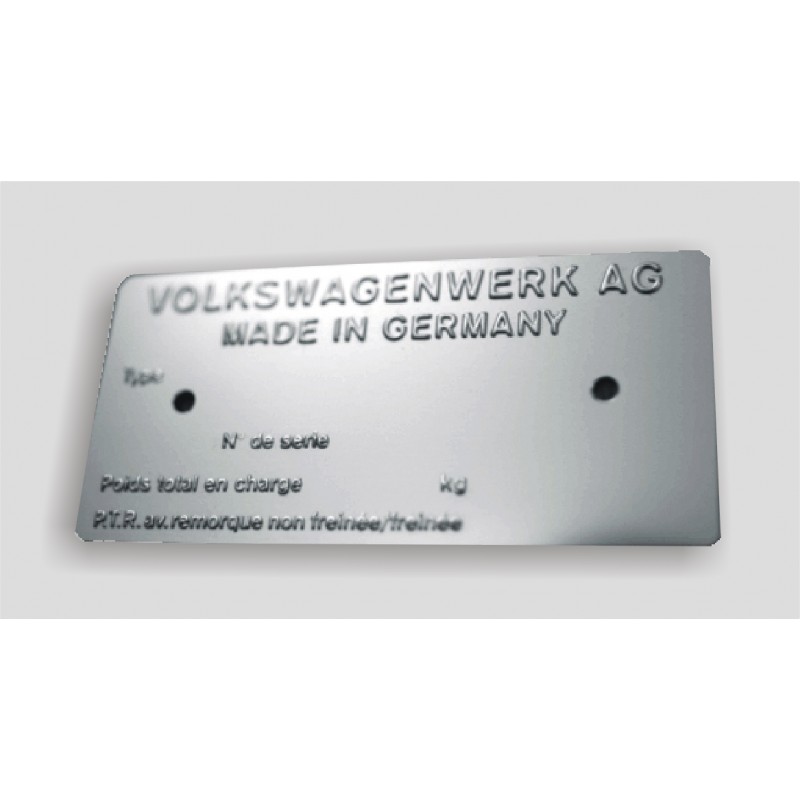Manufacturer Plates for Volkswagen Beetle & Combi

The Volkswagen Beetle and Combi (Transporter) stand as two of the most iconic and recognizable models in automotive history, each playing a significant role in the evolution of mobility and popular culture across the globe. Before 1990, these vehicles went through several generations and variants, each with its own story, features, and identified by unique manufacturer and identification plates, which are crucial for enthusiasts and collectors to authenticate and understand the history of each vehicle.
Volkswagen Beetle (Type 1)
Type 1: The Beetle, designed by Ferdinand Porsche at Adolf Hitler's request to be the "people's car" (Volkswagen in German), first went into production in 1938. This model underwent numerous updates until the end of its production in 2003 in Mexico. The manufacturer's plate of each Beetle provides key information such as the year of production, model, and technical specifications.
- Notable Models Before 1990:
- 1200, 1300, 1500, and 1600: These numbers refer to the engine size in cubic centimeters, with gradual improvements in terms of power and comfort over the years.
- Super Beetle (1302/1303): Introduced in the early 1970s, distinguished by a strut front suspension and a larger front trunk. The identification plate of these models includes specific information to the variant.
- Notable Models Before 1990:
Karmann Ghia (Type 14): An elegant coupe and convertible based on the Beetle platform, produced between 1955 and 1974. The manufacturer and identification plates of these vehicles contain information about the coachbuilder (Karmann) and specific model details.
Volkswagen Combi (Transporter)
Type 2 T1 (1950-1967): Nicknamed "Split" due to its split windshield, the T1 pioneered the concept of light commercial vehicle and minibus. The identification plates of these models are crucial for determining the year of manufacture, production location, and the exact type of vehicle (e.g., Kombi, Microbus, or Deluxe).
Type 2 T2 (1967-1979): Featuring a single-piece windshield, the "Bay Window" introduced improvements in performance and safety. The manufacturer's plate of the T2 provides valuable information on the changes made over the years, particularly regarding the engine and electrical systems.
Type 2 T3 (1979-1990): Known as T25 in the UK and Vanagon in North America, the T3 offered more space and a boxier design. Variants like the Syncro (four-wheel drive) are especially sought after, and the identification plates provide essential details on the technical specifications and options of these models.
These manufacturer and identification plates are not just pieces of metal with numbers engraved; they serve as a direct link to the history and legacy of each vehicle, offering indispensable information for restoration, preservation, and collection. They allow for the verification of a vehicle's authenticity, identification of original specifications, and the tracing of modifications or restorations history. For Volkswagen enthusiasts, researching and understanding these plates is often the first step in preserving the automotive history of these legendary vehicles.

